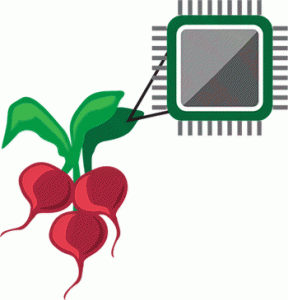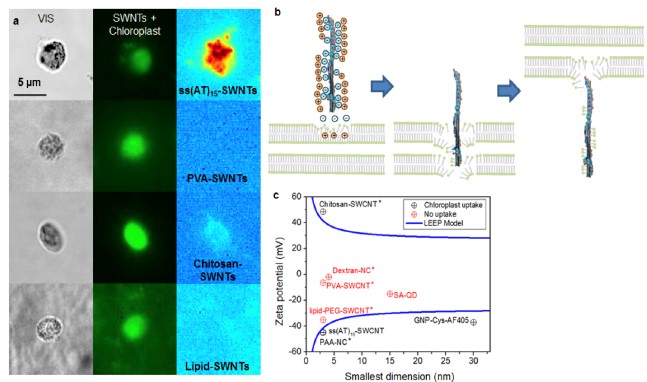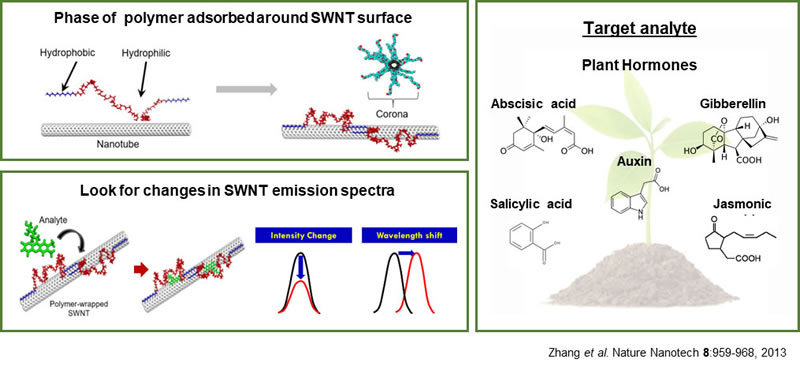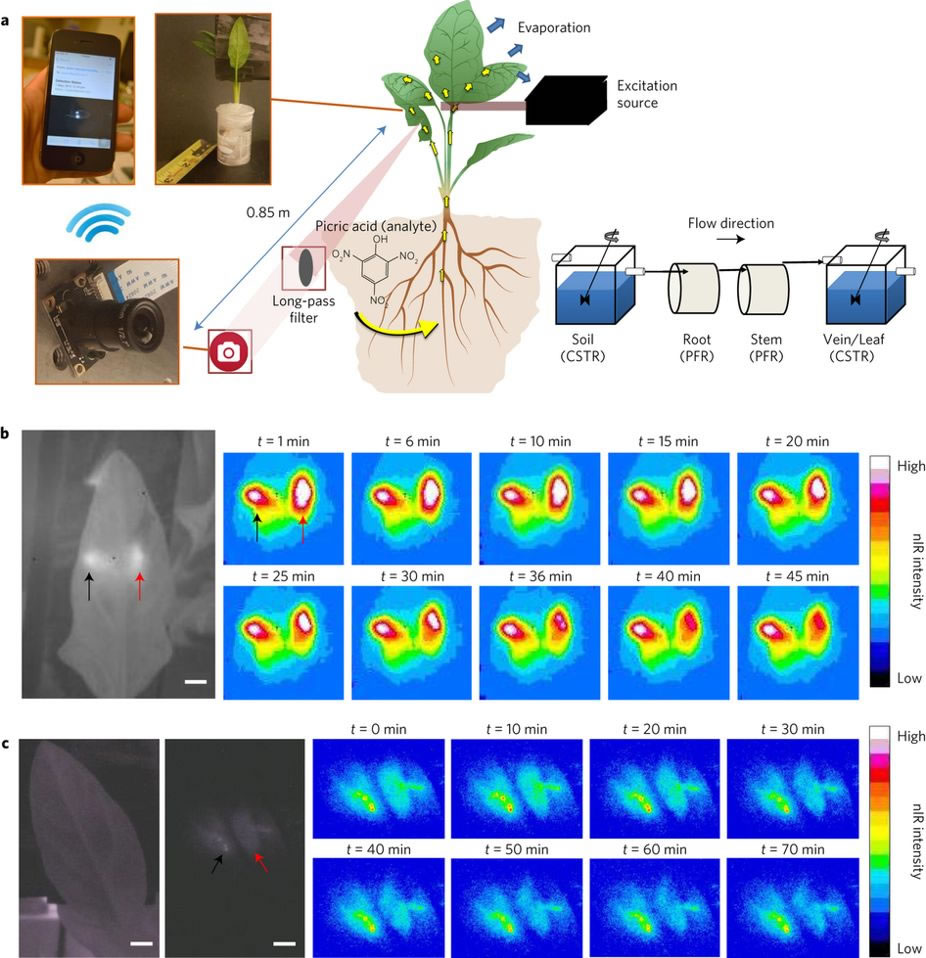Research: Novel Sensors
 DiSTAP will study the production of plant hormones and secondary metabolites to improve urban farming and will develop disruptive technologies for discovering plant biosynthetic pathways.
DiSTAP will study the production of plant hormones and secondary metabolites to improve urban farming and will develop disruptive technologies for discovering plant biosynthetic pathways.
Understanding the Trafficking and Localization of Nanoparticles in Living Plants
The use of functionalized nanoparticles for targeted delivery into plant cells offers exciting opportunities in the field of agriculture, plant bioengineering and biology. However, the relationship between various physiochemical properties of nanoparticle and their ability to target different compartments within plant cells is still relatively unknown. The STRANO Lab has previously examined the subcellular uptake and cellular trapping of a wide range of polymer-nanoparticle conjugates such as various polymer wrapped SWNTs, quantum dots, and nanoceria into chloroplasts, both isolated and in living plants. Our previous work has shown that particle size and zeta potential are the key parameters that determine whether a nanoparticle will penetrate the chloroplast membrane and become localized in the organelle. Based on these observations, we developed a mathematical model of this Lipid Exchange Envelope Penetration (LEEP) mechanism that can be used to understand and engineer nanoparticles for localization in the chloroplast. We aim to identify other nanoparticle parameters to further develop predictive relationship to describe the interaction between nanoparticles and various plant membranes. The result of this study will allow us to engineer functionalized nanoparticles to be delivered specifically to certain biological compartments within plant tissues and cells for various bioengineering applications.

Fabrication of CoPhMoRe Sensor for Important Plant analytes
Plant hormones play a significant role in controlling plant growth and plants’ response to environmental stimuli. The development of nanosensors with high sensitivity would deepen our understanding of the complex plant signaling pathways. Our goal is to generate a library of polymers and discover an optimal CoPhMoRe (Corona Phase Molecular Recognition) sensor for specific plant hormone. Corona phase of SWCNT refers to the phase of the polymer adsorbed around its surface. The recognition takes place by the lateral interactions of the analytes of our interest with the polymer in this corona phase. Depending on the structure of amphiphilic polymers, various kinds of corona phases can be created. Using this property, SWCNT-based sensors can be developed to measure the targeting molecules within the small range of concentration. We aim to study the spatial and temporal distribution of the plants’ signaling pathways in real time and non-destructive manner with high sensitivity.

The nanosensor development will build on the Strano Lab’s existing expertise in nanoparticle localization within plants as well as through a standoff detection system that the Strano lab has developed for optical signal readout from the plant. The STRANO lab has demonstrated that living spinach plants (Spinacia oleracea) are able to function as self-powered auto-samplers and preconcentrators of nitroaromatics (pesticides analogues) within ambient groundwater. The nanosensors are embedded within the mesophyll of the plant leaf through stomatal infiltration. Thereafter, the sensors use near-infrared fluorescent light to communicate with an external receiver, and the resultant data can be sent to a user’s cell phone. As nitroaromatics in the soil are transported up the roots and stem into the leaf tissues, they come into contact with the embedded nanosensors, which report the presence of nitroaromatics in ambient groundwater through the standoff optical setup.

